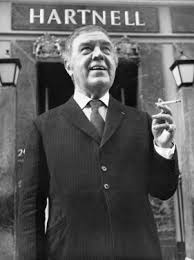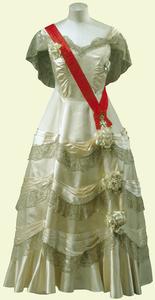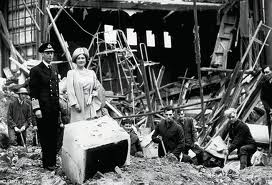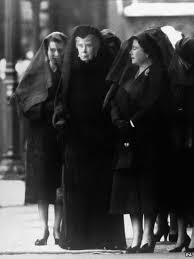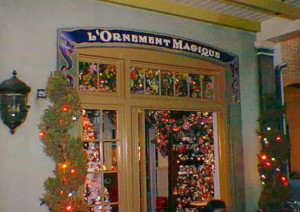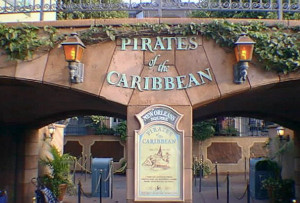For the last three years during Spring Break our family has spent the week visiting the coast of North Carolina. The first two years we stayed at hotels located in Wilmington and last year we rented a beach house on Topsail Island. Staying in Wilmington was great because it was centrally located for easy day trips around the area to visit places such as the local aquariums and various historic sites and museums. Like most road trips, we ate our meals at the local restaurants and only came back to the hotel at night to sleep. When we stayed on Topsail Island we rented a beach house and it was great because we cooked and ate our meals at the house (which was less expensive than eating out every day!) and, since we had seen most of the sites in the area on our previous visits, we spent more time at the beach which was just a short walk away.
Listed below are some of the highlights of the places we visited during our trips to the North Carolina Coast.
North Carolina Aquariums
The North Carolina has three different locations: Roanoke Island, Pine Knolls Shores and Fort Fischer. Each location has different exhibits featuring a variety of animals that can be found in the ocean, lakes and rivers located along the coast of North Carolina. (Our family has visited the Pine Knolls and Fort Fisher locations during our family vacations) For visitor information regarding aquarium hours, admission prices and tours for each of the three locations can be found on their website, ncaquariums.com
The Pine Knoll Shores NC Aquarium is located about 100 miles north of Wilmington and of the three NC Aquariums this one was our personal favorite. There are several different sections or galleries in this aquarium that feature the diverse natural environments, such as the mountain, Piedmont, coastal plain, tidal waters and ocean areas, located in North Carolina. In the Ocean Gallery of the aquarium is the Living Shipwreck exhibit, which holds 306.000 gallons of water, contains a large replica of the U-352 German submarine that sank off the coast of North Carolina during World War II and the tank features a variety of ocean animals, including moray eels, large groupers and several different species of sharks. (Travel tip: Upon arriving at the aquarium, check the scheduled feeding times of the Living Shipwreck exhibit, it is a great opportunity to see the scuba divers inside the tank hand-feeding the fish and they are also specially equipped with underwater audio equipment to hear and answer visitor questions)
Two other smaller exhibits are the Tidal Touch Pool which allows visitors to see a variety of ocean creatures close-up and the Skate and Ray Encounters exhibit where guests can actually gently touch them. Another popular exhibit features three river otters that were rescued from the wild and bottle-fed by the aquarium staff. The large viewing windows of the exhibit located both above and below the surface of the water allow visitors to view the entertaining activities of these playful otters.
The most famous ocean animal of the Pine Knoll Shores Aquarium is a loggerhead sea turtle named “Nimbus”, which means radiant light. The rare white turtle came to the aquarium as a tiny hatchling in August 2010. Born with a severe cleft palate, impaired vision and a genetic condition that affects the skin and shell pigment it was quickly determined that “Nimbus” would be an easy target for predators and it could never be released back into the wild. “Nimbus” now works to raise awareness to the aquarium’s efforts to care for ill or injured sea turtles that are eventually rehabilitated and released back into the wild. Loggerhead turtles are just one of the five different species of sea turtles found in coastal waters of North Carolina.


The Fort Fisher NC Aquarium is located in Kure Beach approximately 20 miles south of Wilmington and of the three NC Aquariums locations, this one focuses on the Cape Fear region of North Carolina. Upon entering, visitors will see a large tree-lined atrium that features man-made streams and ponds filled with frogs, cat fish, bass and several large alligators including one albino alligator but be sure to look for the box turtles hidden among the shrubbery and groundcover located in this area of aquarium. There is also an exhibit featuring several different species of venomous snakes of the Cape Fear region; such as rattlesnakes, copperheads and cottonmouths.
Other exhibits in the aquarium include the Coquina Outcrop Touch Pool where visitors can learn about and touch sea urchins, horseshoe crabs and other sea creatures. The large Cape Fear Shoals exhibit holds 235,000 gallon salt water and features a 25 foot deep replica of a coral reef that gives visitors wonderful views of sharks, stingrays, groupers and moray eels. In 2011, a new multimedia exhibit about the extinct Megalodon opened complete with interactive holograms and touch-screens where visitors can learn information about this ancient sea creature.
When visiting the Aquariums, we would highly recommend the Behind the Scene tours. These informative guided-tours are available for an additional fee and are a wonderful educational experience for a family to enjoy. (Travel note: Be sure to check before a visit to the aquariums to verify prices and make any necessary reservations. We also advise checking the directions and distance to the aquarium and please be sure to allow plenty of time because some of the coastal cities can get congested with traffic especially during the busy summer months)


(Travel note: Located near two of the NC Aquariums are two historical State Parks that would make for two separate and interesting day trips if you combine a visit to one of the Aquariums with one of the nearby NC State Parks. Fort Macon State Park is located almost 8 miles, an easy 15 minute drive, from the NC Aquarium at Pine Knoll Shores. Fort Fisher State Park is located less than a mile, a quick 5 minute drive, from the NC Aquarium at Fort Fisher. Below is information on both Fort Macon and Fort Fisher State Parks.
Fort Macon and Fort Fisher State Parks
This area of North Carolina was very vulnerable to attack first by pillaging pirates, such as the famous Blackbeard, in the 1700s and then later by invading Spaniards and British in the 1800s. The importance of the coastal defenses of the United States caused the US government to request a chain fortifications to be built along the Eastern coast of the United States and the current Fort Macon and Fort Fisher were two of those military installations that were built after the War of 1812.
Prior to the American Revolution a small military installation named Fort Hampton was built to guard the city of Beaufort and was built across the inlet on a barrier island but it was never used. After the War of 1912 the fort was abandoned and eventually a hurricane in 1825 destroyed the building and coastal erosion eliminated any remaining evidence of the small fort. The current Fort Macon was built on the site and completed 1834, it is a five-sided military defense brick and stone structure with 4½ feet deep outer walls. During the Civil War, the Confederate Army lost control of Fort Macon to the Union forces and it was used as a coal station for naval ships. After the war, Fort Macon was used as federal prison from 1867 to 1876. It was briefly during the Spanish-American War and eventually closed permanently in 1903. The state of North Carolina purchased the property in the 1920s, the Civilian Conservation corps restored the structure and the Fort Macon State Park officially opened in May 1936. Then during World War II, Fort Macon was once again armed with military force to defend the United States eastern coast. In 1946, the US Army returned the fort to the state of North Carolina. Today, Fort Macon is opened to the public and visitors can take a tour and view the museum exhibits that explain the history of the fort. For more information regarding hours, admission fees and directions, please see the NC State Park website at ncparks.gov and then search for Fort Macon State Park. (Travel note: During our visit to Fort Macon in 2012, we stayed for one of the evening programs and were able to watch a cannon firing demonstration which was very interesting and extremely loud! Before visiting, check the website for specific days and time that this program is offered)


Another Civil War Era Military Fort located near Wilmington, NC is Fort Fisher State Park, it is a less than 20 miles by car and it would take approximately half an hour to drive there. We have not visited Fort Fischer but it is very close to the NC Aquarium Fort Fisher State Park which is located less than a mile away and a quick 5 minute drive. For more information regarding the history of Fort Fischer and the hours of operation, admission fees and directions, please see the NC State Park website at ncparks.gov and then search for Fort Fishers State Park.
USS North Carolina Battleship
Located across the Cape Fear River from downtown Wilmington, NC is the USS North Carolina (BB-55) which was an American battleship used during World War II and it had a crew of 144 commissioned officers and 2,195 enlisted men and was armed with nine 16 inch 45 caliber guns mounted on three turrets and twenty 5 inch 38 caliber guns mounted in two sets of 10 each. During the course of the war it provided anti-aircraft coverage for the larger carriers in the fleet while putting in over 300,000 nautical miles during its tour of duty in the Pacific Ocean losing only 10 men with 67 men wounded. After the war, it was used as a training vessel until it was finally decommissioned in June 1947 and place on Inactive Reserve Fleet based in New Jersey for the next 14 years. In 1958, the state of North Carolina launched a “Save Our Ship” (SOS) campaign to rescue the Battleship from being scrapped. It proved a success and the Battleship arrived at its current location in Wilmington, NC in October 1961 and was dedicated in April 1962 at which time it was opened for public tours.


To start the visitor experience on the North Carolina Battleship it is advised to begin with the orientation movie shown in the auditorium and looking at the exhibits in the adjacent hall before heading up the gangway and boarding the Battleship to start the self-guided tour. Once on the Battleship there are clearly marked arrows indicating the route of the tour and information signs explaining the different areas. Please be advised that the Battleship is very large and the average time it takes to tour the nine levels is approximately two hours, since the tour is self-guided visitors can tour at their own pace. Also there are several ladders to climb up and down during the tour and please check in advance to see what the limitations are if guests have any personal mobility issues or restrictions. (Travel note: I would advise visitors to wear the appropriate shoes while on board the Battleship, high heels that could get caught in the metal grates would not be a good choice!! Also, limit the items you take onboard since some of the corridors on the Battleship can become very narrow and possibly crowded, especially if you are visiting during the summer months. Hang onto cellphones, sunglasses and camera or as an extra precaution safely store them while walking on the tour)
For more information regarding hours of operation, admission prices and tour details and directions to the North Carolina Battleship, please visit their website at battleshipnc.com
Bellamy Mansion
Located near downtown Wilmington, NC is the Bellamy Mansion and Museum. The Mansion was the home of John Bellamy, a prosperous doctor and prominent businessman, who lived there during the Civil War period with his wife, Eliza, and their nine children. The elegant twenty-two room house was designed by architect James F. Post in a Greek Revival and Italianate style and was built by local slave laborers and completed by skilled carpenters and artisans. At one point during the Civil War, Federal Troops occupied the house, later the house survived a disastrous fire in 1972 and, years later after extensive restorations, the house is currently administered by a nonprofit organization as a museum with guided tours available. Visitors walk along a quaint oyster path, climb the stairs to enter the elegant 10,000 square foot home through a grand entrance portico with massive white columns typical of southern antebellum houses. Surrounding the house is a lovely Victorian style garden with stately 150 year old magnolia trees and also located on the property are fully-restored slave quarters. For more information about hours, admission fees and directions please check out their website at bellamymansion.org (Travel note: A tour of the Bellamy Mansion is a great historical learning experience for families, but I would recommend that the activity is more appropriate for families with older school aged children since the attention span of toddlers and babies can be very limited)


Poplar Grove Plantation
The Poplar Grove Plantation is located about 21 miles from Wilmington, NC and is less than a half an hour drive. Poplar Grove was once the home of the Foy family from 1795 to 1971 for six generations and was one of the last surviving peanut plantations in North Carolina. When the former house was destroyed in a fire in 1850, Joseph Mumford Foy decided to build the new one closer to the main road. The present 4,284 square foot Manor House has a raised basement brick foundation with a two-story wood-sided structure built on top and it is situated in a beautiful grove of trees dripping with Spanish moss. Poplar Grove is listed on the National Register Historic Places and the Poplar Grove Foundation, a nonprofit organization, administrates the property and the former plantation is available for tours of the house and the grounds. Seasonally, Poplar Grove has various living history demonstrations in the outbuildings on the property. For more information concerning the hours of operation, admission fees and directions, please visit the Poplar Grove Plantation website at poplargrove.org (Travel note: A tour of the previously mentioned Bellamy Mansion located near downtown Wilmington is a great contrast to the Poplar Grove Plantation tour and both experiences are a wonderful way to learn about city and country life during the Civil War Era)


Serpentarium
Located in downtown Wilmington, NC is the Cape Fear Serpentarium which is a very unique indoor zoo featuring some of the rarest and most dangerous reptiles in the world including several species of snakes, such as Anacondas, Pythons and Boa Constrictors. Other exhibits display exotic lizards and crocodiles. The Serpentarium is owned and operated by Dean Ripa, a local Wilmington man who has had a life-long passion for snakes and reptiles. Ripa, the famous herpetologist, became on the first international snake hunters and he has traveled to five continents to work in 30 different countries to provide snakes and reptiles to major zoos, animal facilities and private clients. The Serpentarium is a great family activity for those interested in snakes and reptiles. Now, on a personal note, I have never set foot in the building because I have a major fear of snakes but I am told by both my husband and daughter that it was a great experience for them and they enjoyed it!! For more information on the Sertentarium hours, admission fees and directions, please check out their website at capefearserpentarium.com


Additional places of interest on the coast of North Carolina
- North Carolina Maritime Museum in Beaufort – ncmaritimemuseums.com
- Cape Fear Museum in Wilmington – capefearmuseum.com
- Airlie Gardens in Wilmington – airliegardens.org
If you are interested in seeing the crafts made from the seashells gathered on our visits to the coast of North Carolina or the beach souvenirs that displayed in our home, please click on the following links to the Décor post, Beach Memorabilia Display, and the Craft posts, Seashell Embellished Mirror, Embellished Photo Frames and Seashell Crafts.



